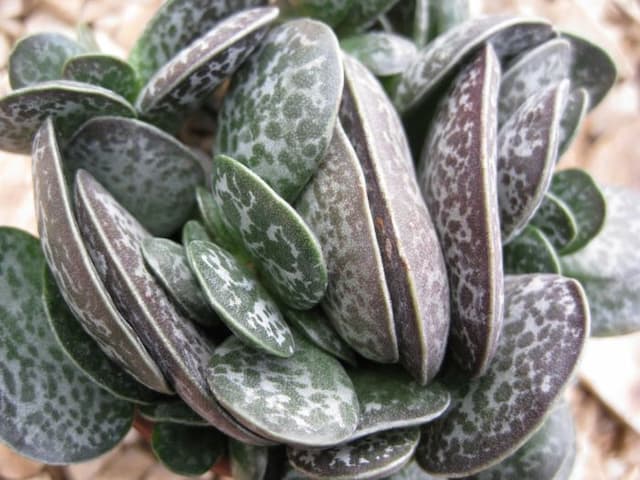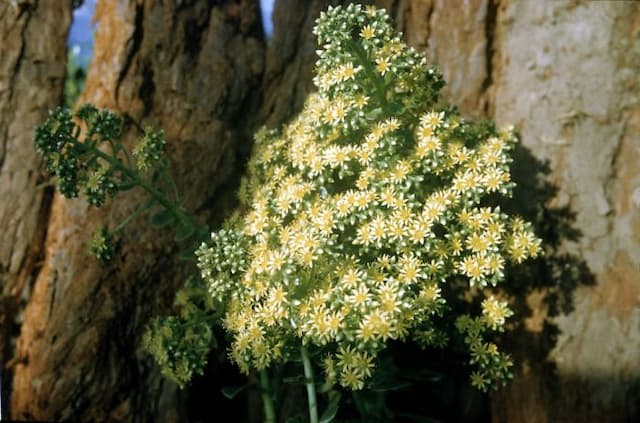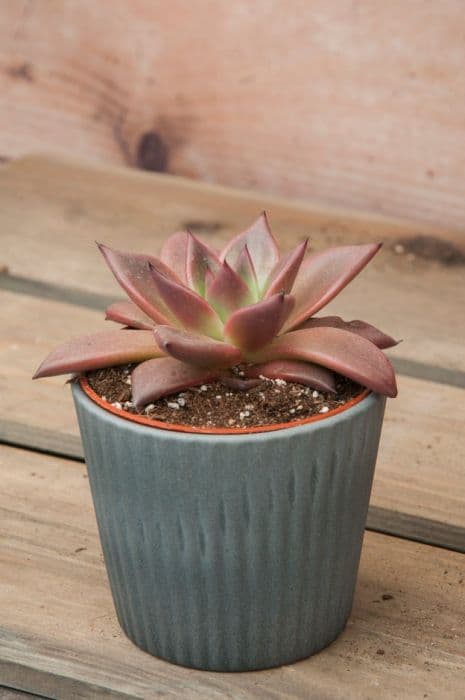Panda Plant Kalanchoe tomentosa
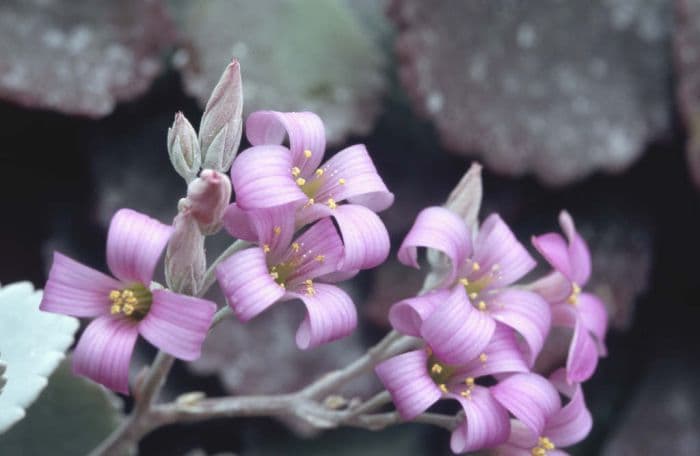
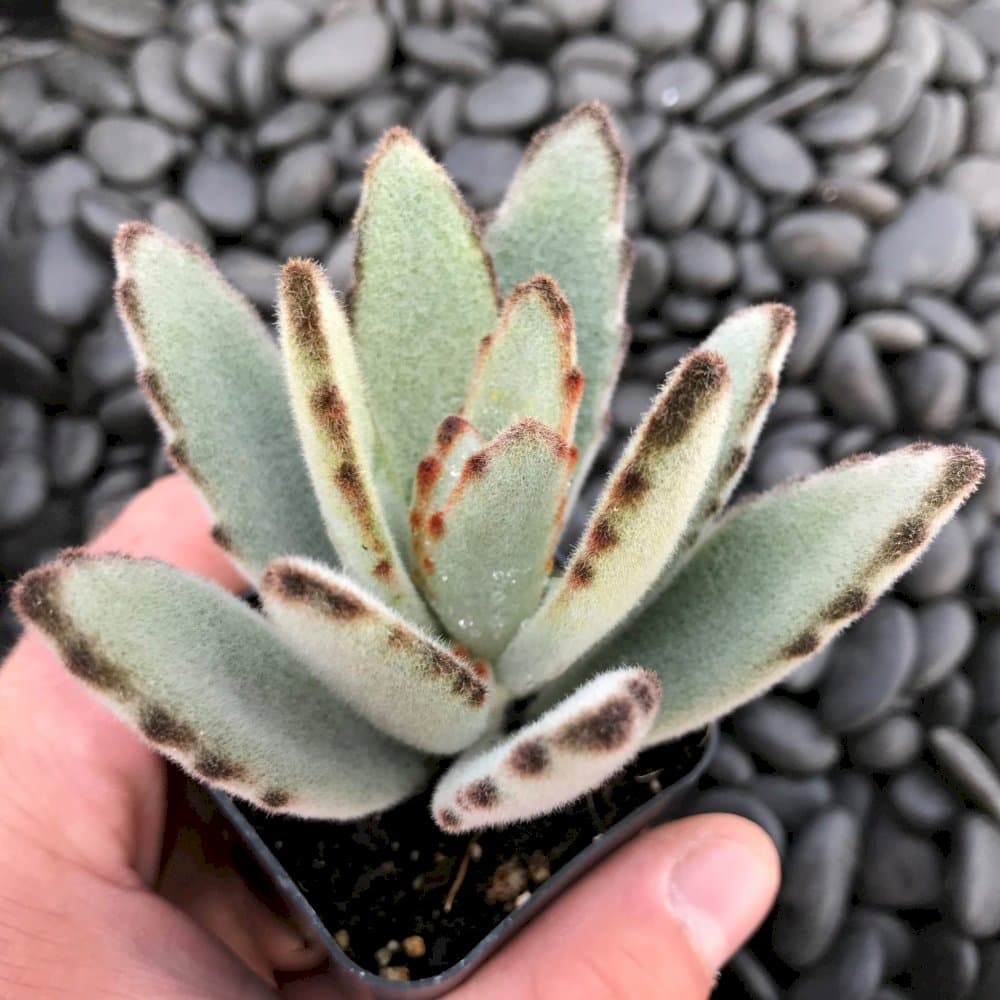
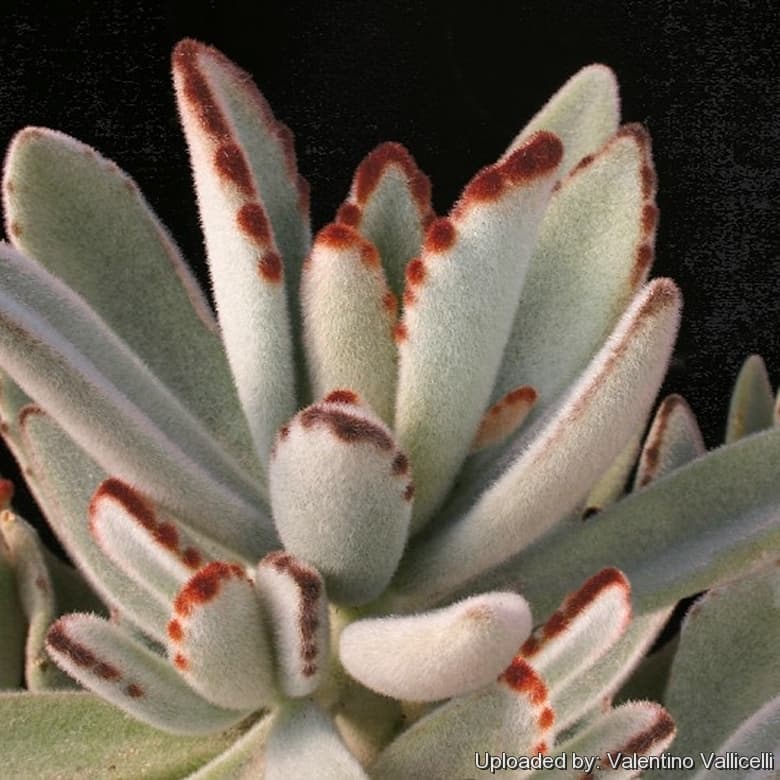
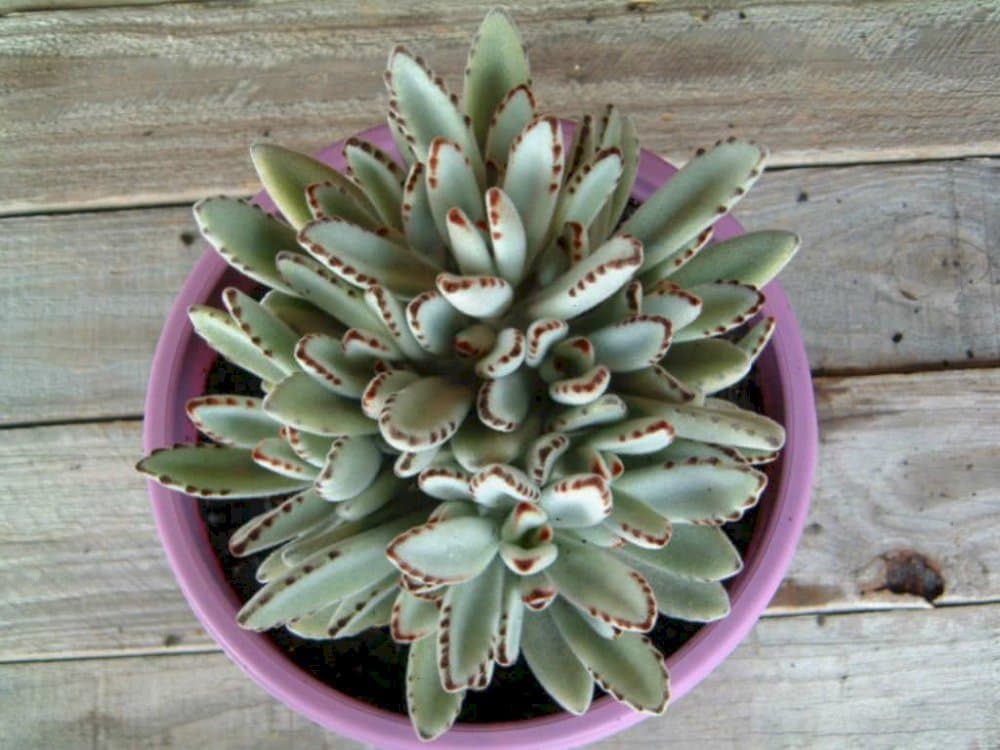
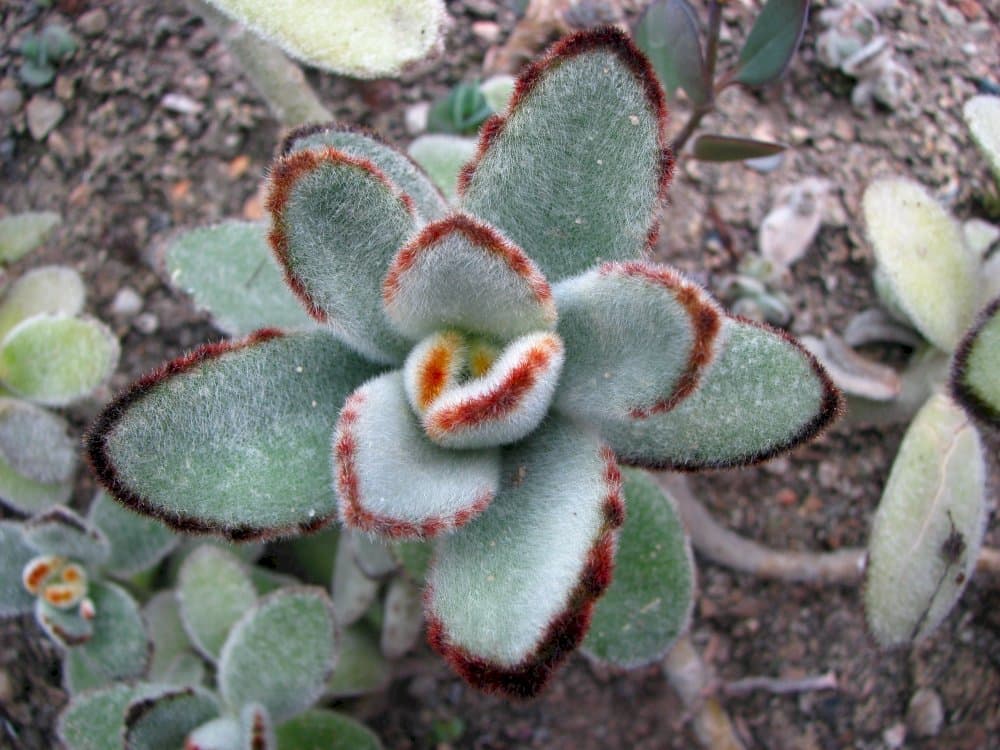
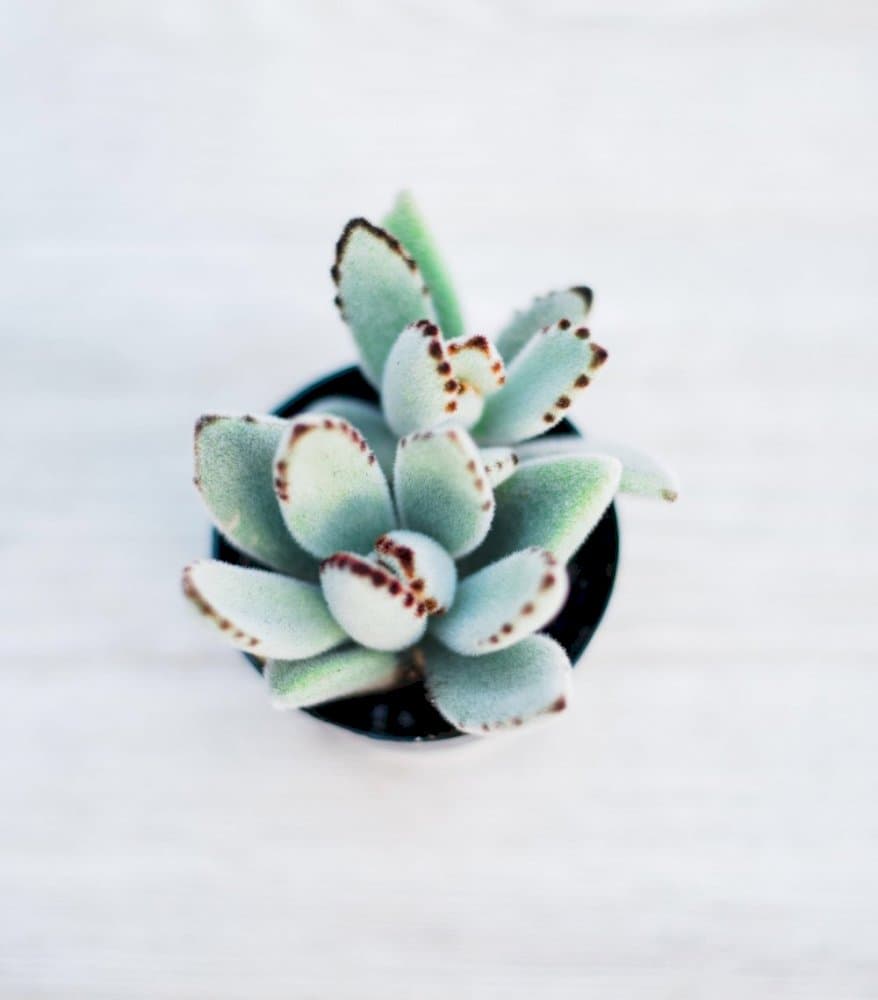
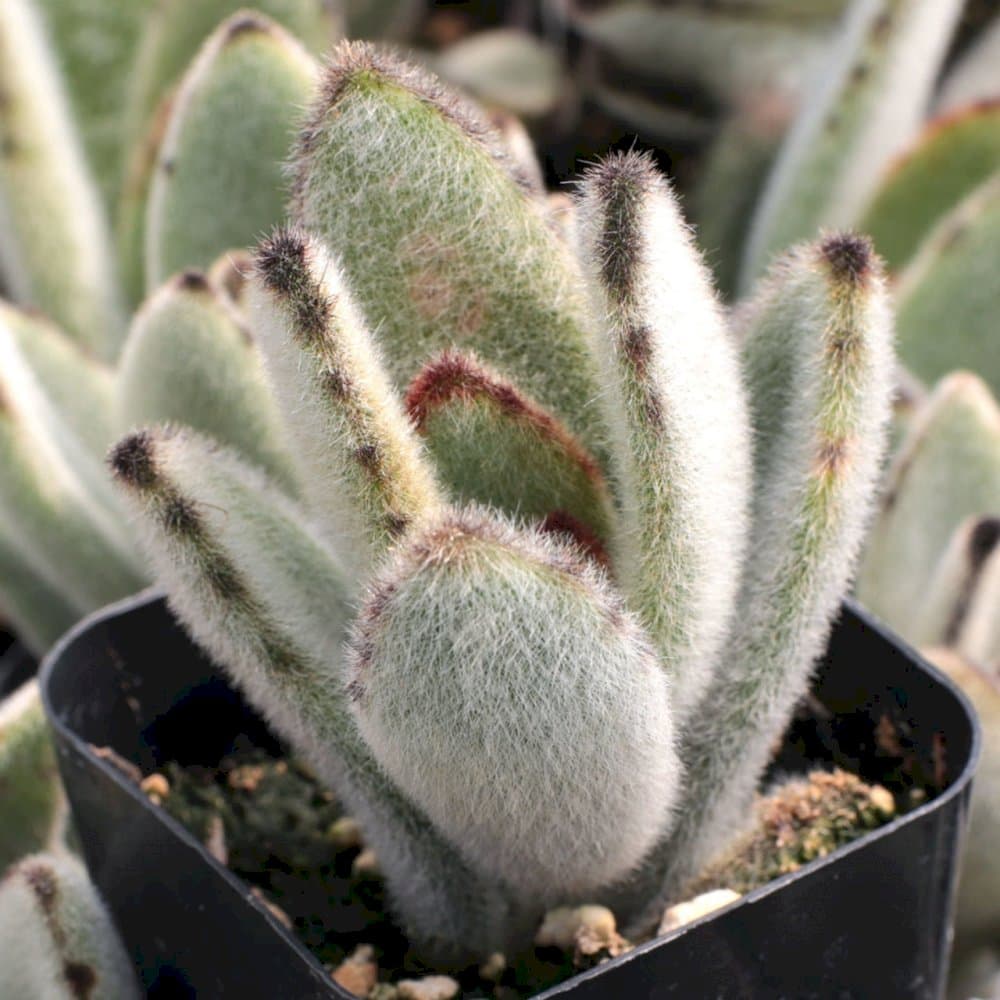
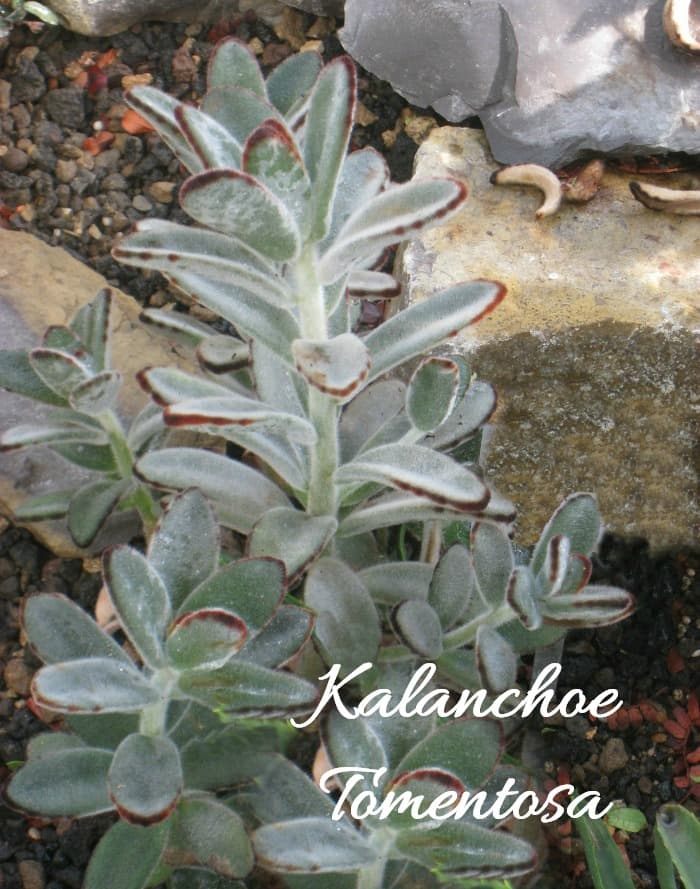
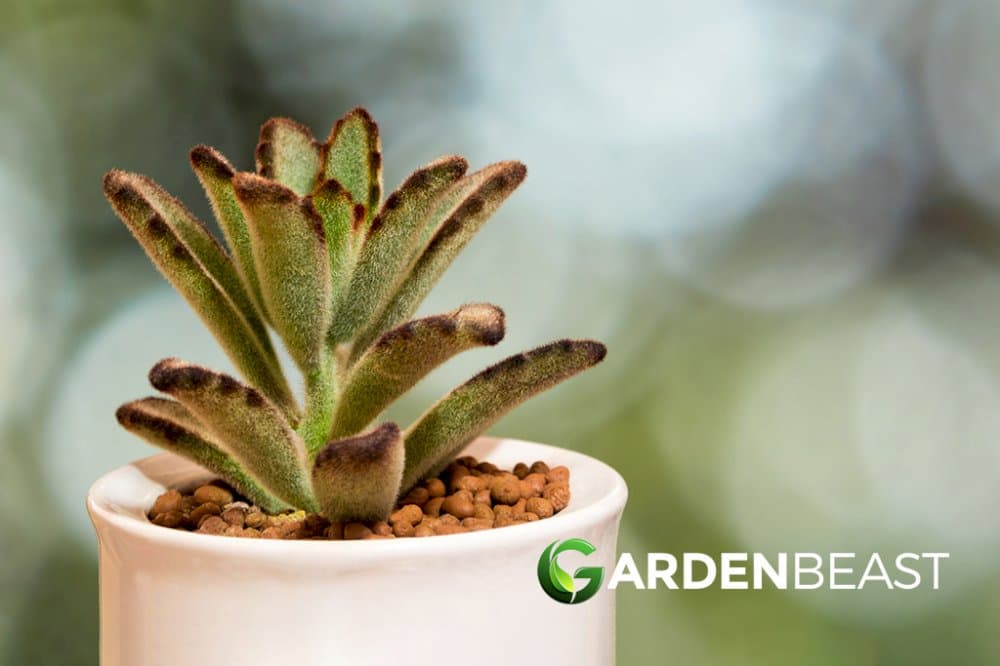
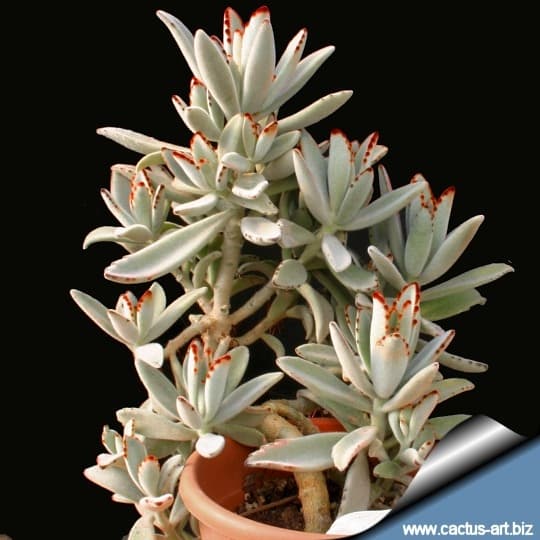
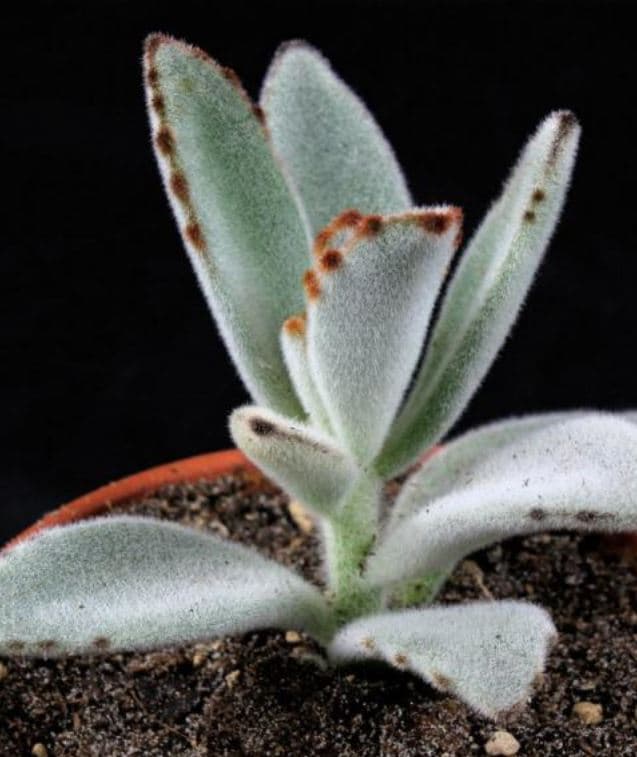
ABOUT
The panda plant is characterized by its distinctive woolly appearance. This succulent has a dense growth of oval-shaped leaves that are covered with a layer of fine hairs, giving them a fuzzy texture that's reminiscent of the fur of a panda, hence its common name. The color of these soft leaves is a silvery green with brownish or rust-colored spots along the edges and tips, which add to their visual appeal. As a typical feature, the leaves are plump and fleshy, indicative of the plant's ability to store water to withstand periods of drought. The furry coating also helps the panda plant minimize water loss, making it a hardy and low-maintenance option for plant lovers. As it matures, the foliage often becomes more pronounced with the contrasting colors and textures making it a striking addition to any succulent collection. The panda plant produces small flowers that are not particularly showy and are therefore not the main attraction. It is primarily grown for its unique and attractive foliage, which can add a touch of exotic flair to indoor plant arrangements or outdoor gardens in appropriate climates.
About this plant
 Names
NamesFamily
Crassulaceae.
Synonyms
Panda Plant, Pussy Ears, Chocolate Soldier.
Common names
Bryophyllum tomentosum, Kalanchoe tomentosa Baker
 Toxicity
ToxicityTo humans
Panda Plant (Kalanchoe tomentosa) is generally considered to be of low toxicity to humans. It contains cardiac glycosides that can be harmful if ingested in significant quantities. While serious cases of poisoning are rare, ingestion can cause gastrointestinal irritation, including nausea, vomiting, and diarrhea. If any part of the plant is consumed, it is advisable to seek medical advice, especially for children and individuals with existing health conditions.
To pets
Panda Plant (Kalanchoe tomentosa) is toxic to pets, particularly to cats and dogs. This toxicity is due to the presence of compounds known as cardiac glycosides. If ingested, a pet may experience symptoms such as vomiting, diarrhea, and abnormal heart rhythm. In severe cases, an intake of a large amount of the plant can lead to serious complications such as changes in heart rate and potentially life-threatening reactions. Pet owners should keep Panda Plants out of reach of their pets and seek veterinary assistance immediately if they suspect their pet has ingested any part of the plant.
 Characteristics
CharacteristicsLife cycle
Perennials
Foliage type
Evergreen
Color of leaves
Gray-green
Flower color
Yellow-green
Height
1-2 feet (30.48-60.96 cm)
Spread
1-2 feet (30.48-60.96 cm)
Plant type
Succulent
Hardiness zones
9
Native area
Madagascar
Benefits
 General Benefits
General Benefits- Low Maintenance: Panda Plant requires minimal care and can tolerate neglect, making it ideal for busy individuals or those new to gardening.
- Drought Tolerant: Adapted to survive with little water, making it perfect for arid climates and water-conscious gardeners.
- Unique Appearance: The fuzzy, silver-green leaves with brownish-red markings provide an interesting texture and aesthetic to any collection or decor.
- Pet Friendly: Unlike some houseplants, it's not known to be toxic to cats and dogs, which is reassuring for pet owners.
- Long-lasting: As a succulent, it is quite resilient and can live for many years with proper care.
- Propagation: Panda Plant can be easily propagated from leaf cuttings, making it simple to create more plants for gifting or expanding your own collection.
- Compact Size: Its small size makes it ideal for growing in containers, on windowsills, or in limited spaces.
- Versatile Decoration: Can be used in various settings such as terrariums, rock gardens, or as a desktop plant for offices and homes.
- Seasonal Blooms: Though infrequent, it can produce flowers under the right conditions, adding an extra element of surprise and beauty.
 Medical Properties
Medical Properties- Anti-inflammatory: Kalanchoe tomentosa is thought to have compounds that may reduce inflammation, however, there is limited scientific evidence to support this.
- Analgesic: There are some beliefs that the plant has pain-relieving properties.
- Antimicrobial: Some studies suggest that extracts of the plant could have antimicrobial effects, but further research is needed to confirm this.
- Wound-healing: It is claimed that the plant promotes wound healing due to its astringent properties, yet this is based on traditional use with limited empirical validation.
 Air-purifying Qualities
Air-purifying QualitiesThis plant is not specifically known for air purifying qualities.
 Other Uses
Other Uses- Kalanchoe tomentosa, commonly known as panda plant, can be used in miniature gardens or fairy gardens due to its small size and interesting texture, adding a whimsical touch to the setting.
- As a conversation piece in unusual plant collections, the panda plant's fuzzy leaves and unique appearance can serve as an attractive topic for discussion among plant enthusiasts.
- In arts and crafts, the unique look of panda plant leaves can inspire designs, patterns, and textures for items like textiles, wallpapers, and stationery.
- Panda plant can be used in educational settings such as schools or children's workshops to teach youngsters about plant care and succulent propagation.
- This succulent can be a model organism for botanical studies focusing on adaptations such as leaf fuzziness that help plants conserve water in arid environments.
- For themed garden displays, the panda plant can represent its native Madagascar or be used to simulate exotic landscapes in zoos and botanical gardens.
- The leaves of panda plant can potentially be used in flower arrangements as a hardy and textural filler that adds contrast to delicate blooms.
- Panda plant can be a pet-friendly option for households since it is not known to be toxic to cats or dogs, making it a safe decoration in pet-accessible areas.
- Dried leaves of panda plant could be used in potpourri mixes to add a soft, fluffy texture and a green accent to dried floral arrangements.
- The plant silhouette can serve as an aesthetic element for photographers who are looking for interesting textures and shapes in macro photography.
Interesting Facts
 Feng Shui
Feng ShuiKalanchoe tomentosa, known as Panda Plant, is not traditionally used in Feng Shui practice.
 Zodiac Sign Compitability
Zodiac Sign CompitabilityThe Panda Plant is not used in astrology practice.
 Plant Symbolism
Plant Symbolism- Persistence: The Kalanchoe tomentosa, commonly known as Panda Plant, is known for its ability to thrive in suboptimal conditions and store water in its leaves, symbolizing the ability to persist and endure through difficult times.
- Healing: The succulent nature of Panda Plant, with its thick, fleshy leaves, is often associated with healing properties, representing restoration and recovery.
- Longevity: Since Panda Plants can live for many years with proper care, they are a symbol of longevity and timelessness.
- Prosperity: In some cultures, succulents are believed to bring wealth and prosperity to their owners, and Panda Plant, with its lush appearance, is no exception.
 Water
WaterPanda Plant should be watered when the top inch of the soil feels dry to the touch. Typically, this would mean watering every 1 to 2 weeks, depending on the humidity and temperature of your environment. Use room temperature water and slowly pour it around the base of the plant until it begins to drain from the bottom of the pot. If using small pots, a rough estimate is about 4 ounces of water per watering session; for larger pots, you may use up to a half gallon, making sure not to over-water as it can lead to root rot. Reduce watering during the winter months to prevent waterlogging.
 Light
LightPanda Plants thrive in bright, indirect sunlight and can also tolerate some partial shade. The best spot for this plant is near a window that offers plenty of light but is shielded from the direct rays of the afternoon sun, to avoid scorching the leaves. If natural light is limited, placing the plant under a grow light can also work well.
 Temperature
TemperaturePanda Plant prefers temperatures between 60 and 75 degrees Fahrenheit but can survive in temperatures as low as 50 degrees and as high as 85 degrees Fahrenheit. They should be protected from drafts and sudden temperature changes that can stress the plant. The ideal conditions for a Panda Plant is a consistently warm and stable environment without extreme fluctuations.
 Pruning
PruningPruning Panda Plant is beneficial for maintaining its shape and encouraging bushier growth. It's best to prune in the spring or early summer by removing any leggy stems or dead leaves to promote a more compact plant. Pruning should be done sparingly, as the plant has a slow growth rate, and over-pruning can hinder its development.
 Cleaning
CleaningAs needed
 Soil
SoilPanda Plant prefers a well-draining soil mix consisting of one part potting soil, one part perlite or sand, and a handful of peat. The ideal pH range for this succulent is between 6.0 and 7.0 for healthy growth.
 Repotting
RepottingPanda Plants should be repotted every two to three years or when they have outgrown their current pot, to refresh the soil and provide more room for root growth.
 Humidity & Misting
Humidity & MistingPanda Plant thrives in average indoor humidity levels, typically ranging from 40% to 60%.
 Suitable locations
Suitable locationsIndoor
Place Panda Plant in bright, indirect light indoors and water sparingly.
Outdoor
Grow Panda Plant in partial shade outdoors and protect from intense sun.
Hardiness zone
9-11 USDA
 Life cycle
Life cycleKalanchoe tomentosa, commonly known as Panda Plant, begins its life cycle when seeds germinate in well-draining soil with warmth and indirect light. The seedlings slowly develop fleshy, fuzzy leaves in a rosette pattern, indicative of the succulent's maturation process. Once mature, the Panda Plant may produce small, greenish flowers on stalks during the springtime if exposed to adequate light conditions and a period of winter dormancy. After pollination, which is rare in indoor conditions, the flowers can produce seed pods, completing the reproductive cycle. Panda Plant can also propagate vegetatively through leaf cuttings, which root readily in soil or water, creating a clone of the parent plant. Over time, with proper care, the plant grows larger and can become pot-bound, requiring division or repotting to continue its life cycle.
 Propogation
PropogationPropogation time
Spring-Summer
The Panda Plant, more scientifically known as Kalanchoe tomentosa, can be propagated most effectively through leaf cuttings. The best time to propagate is in the spring or early summer when the plant is actively growing. To propagate by leaf cuttings, you will need to take a healthy leaf from the plant and let it callous over for a few days in a warm, dry place. Once the cut end has developed a calloused surface, place the leaf on top of well-draining soil and mist lightly to maintain moisture without causing rot. Roots and a new plantlet will typically emerge from the base of the leaf after a few weeks. It is important to provide bright, indirect light and keep the soil lightly moist during this time to encourage growth while avoiding direct sunlight and overwatering, which could damage the tender new roots.




